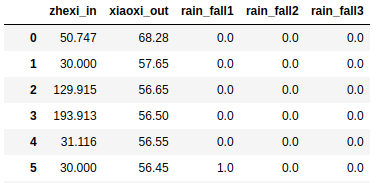TPOT是一个开源的机器学习项目,项目地址为:https://github.com/EpistasisLab/tpot
1. TPOT with code
step 1: 导入类模块
from tpot import TPOTClassifier #分类器 from tpot import TPOTRegressor #回归器
step 2: 实例化(default)
#创建默认分类器 default_pipeline_optimizer_classifier = TPOTClassifier() #创建默认回归器 default_pipeline_optimizer_regressor = TPOTRegressor()
step 2: 实例化(custom)
#创建自定义分类器 custom_pipeline_optimezer_classifier = TPOTClassifier(generations=50,population_size=50,cv=5,random_state=100, verbosity=2) #创建自定义回归器 custom_pipeline_optimezer_regressor =TPOTRegressor(generations=5,population_size=5,cv=5,random_state=20, verbosity=1)
step 3: 准备训练集、测试集 X_train, y_train, X_test, y_test = ? #可以使用sklearn.model_selection.train_test_split()函数 step 4: 训练 custom_pipeline_optimezer_regressor.fit(X_train, y_train) step 5: 测试 print(custom_pipeline_optimezer_regressor.score(X_test, y_test)) step 6: export the corresponding Python code for the optimized pipeline custom_pipeline_optimezer_regressor.export('tpot_exported_pipeline.py')
2.scoring function
方式一:pass a string to the attribute scoring
属性值可以为
'accuracy', 'adjusted_rand_score', 'average_precision', 'balanced_accuracy',
'f1','f1_macro', 'f1_micro', 'f1_samples', 'f1_weighted', 'neg_log_loss', 'neg_mean_absolute_error',
'neg_mean_squared_error', 'neg_median_absolute_error', 'precision', 'precision_macro', 'precision_micro',
'precision_samples', 'precision_weighted','r2', 'recall', 'recall_macro', 'recall_micro', 'recall_samples',
'recall_weighted', 'roc_auc', 'my_module.scorer_name*'
方式二:用户自定义
# Make a custom metric function def my_scoring_func(y_true, y_pred): return mean_squared_error(y_true, y_pred) # Make a custom a scorer from the custom metric function # Note: greater_is_better=False in make_scorer below would mean that the scoring function should be minimized. my_scorer = sklearn.metrics.scorer.make_scorer(my_scoring_func,greater_is_better=False)
custom_pipeline_optimezer_regressor =TPOTRegressor(generations=5,population_size=5,cv=5,random_state=20, verbosity=1,scoring=my_scorer)
3.config_dict
有四个默认的configuration options
- Default TPOT
- TPOT light
- TPOT MDR
- TPOT sparse
具体说明:http://epistasislab.github.io/tpot/using/#built-in-tpot-configurations
custom_pipeline_optimezer_regressor =TPOTRegressor(generations=5,population_size=5,cv=5,random_state=20,
verbosity=1,config_dict='TPOT light')
4.用户自定义config
tpot_config = {
'sklearn.naive_bayes.GaussianNB': {
},
'sklearn.naive_bayes.BernoulliNB': {
'alpha': [1e-3, 1e-2, 1e-1, 1., 10., 100.],
'fit_prior': [True, False]
},
'sklearn.naive_bayes.MultinomialNB': {
'alpha': [1e-3, 1e-2, 1e-1, 1., 10., 100.],
'fit_prior': [True, False]
}
}
custom_pipeline_optimezer_regressor =TPOTRegressor(generations=5,population_size=5,cv=5,random_state=20,
verbosity=1,config_dict=tpot_config)
5.分布式环境训练
from sklearn.externals import joblib
import distributed.joblib
from dask.distributed import Client
# connect to the cluster
client = Client('schedueler-address')
# create the estimator normally
estimator = TPOTClassifier(n_jobs=-1)
# perform the fit in this context manager
with joblib.parallel_backend("dask"):
estimator.fit(X, y)
6.实际项目
项目目标是预测下游水库的进水量,其源数据内容如下

第一列是下游水库的进水量,第二列是上游水库的出水量,其余的是上下游之间降雨观测点的雨量信息